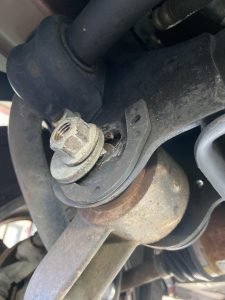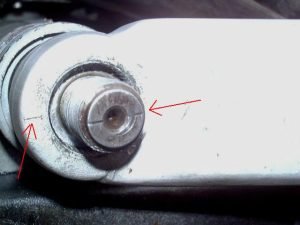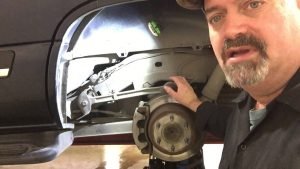
Contents
How to Install a GPS System in Your Car: A Step-by-Step Guide
Navigating unfamiliar roads can be stressful, but a properly installed GPS system can transform your driving experience. This guide provides a comprehensive, step-by-step approach to installing a GPS system in your car, ensuring a seamless and safe journey. Remember, safety is paramount, so if you’re uncomfortable with any step, consult a professional.
🛒 Recommended Product
Choosing Your Installation Method:
Before you begin, decide how you want to mount your GPS device. You have several options:
- Windshield Mount: The most common method, offering a clear view and easy access.
- Dashboard Mount: A more permanent solution, requiring a secure adhesive or mounting bracket.
- CD Player Slot Mount: A space-saving option, but only compatible with certain GPS devices.
- Air Vent Mount: A convenient and relatively unobtrusive choice.
Tools You’ll Need:
- Your GPS device and all included components (power adapter, mounting bracket, etc.).
- A microfiber cloth or cleaning solution (for the mounting surface).
- Possibly a screwdriver (depending on your chosen mounting method).
- Optional: A power inverter (if your car lacks a 12V outlet).
Step-by-Step Installation Guide (Windshield Mount Example):
-
Clean the Mounting Surface: Thoroughly clean the area of your windshield where you plan to mount the GPS device. Remove any dust, dirt, or debris with a microfiber cloth and a gentle cleaning solution. Ensure the surface is completely dry before proceeding.
-
Attach the Mounting Bracket: Carefully align the mounting bracket according to the manufacturer’s instructions. Ensure it’s securely attached to your windshield. Follow any specific instructions provided with your device; this might involve peeling a protective film or using adhesive.
-
Connect the Power Adapter: Plug the power adapter into your car’s 12V outlet (cigarette lighter). If your vehicle doesn’t have one, you’ll need a power inverter to convert your car’s power source.
-
Secure the GPS Device: Carefully attach the GPS device to the mounting bracket. Ensure it’s securely fastened and won’t easily fall or shift during driving.
-
Route the Cable: Neatly route the power cable along the edge of your dashboard or trim, avoiding any obstructions or moving parts. Tuck excess cable away to prevent it from becoming a hazard.
-
Power On and Test: Turn on your GPS device and ensure it’s functioning correctly. Check the display, GPS signal, and all other features. If you have any issues, refer to your device’s user manual.
Tips for a Successful Installation:
- Consider Placement: Choose a location that minimizes glare and obstructs your view as little as possible.
- Cable Management: Keep cables tidy and out of the way to avoid distractions and potential hazards.
- Adhesive Strength: If using adhesive, allow sufficient time for it to cure before using the device.
- Read the Manual: Always consult your GPS device’s manual for specific instructions and troubleshooting.
Common Mistakes to Avoid:
- Not cleaning the mounting surface properly: This can lead to a weak bond and the device falling.
- Incorrectly routing the power cable: This can create a hazard or damage your vehicle’s interior.
- Using excessive force during installation: This could damage your device or your vehicle.
- Ignoring manufacturer’s instructions: This can lead to improper installation and malfunction.
Final Thoughts:
Installing a GPS system in your car is a straightforward process when approached methodically. By following these steps and tips, you can enjoy the benefits of a well-installed navigation system for years to come. Remember, if you’re unsure about any step, it’s always best to consult a professional installer. Safe travels!
🛒 Recommended Product
FAQ
Q. What types of GPS systems are available for car installation?
A. There are several types, including permanently installed in-dash units (often integrated with the car’s infotainment system), portable GPS devices that can be mounted on the windshield or dashboard, and smartphone-based GPS navigation apps utilizing your phone’s data connection. Each has different installation methods and levels of integration with your vehicle.
Q. How difficult is it to install a GPS system in my car?
A. The difficulty varies greatly depending on the type of system. Installing a portable GPS device is very simple; it typically just involves plugging it into a power source (often your car’s cigarette lighter) and mounting it. Installing a permanently mounted in-dash unit, however, is significantly more complex and often requires professional installation due to the wiring and integration with the car’s electrical system.
Q. What tools and materials will I need to install a GPS system?
A. For portable units, you’ll likely only need the GPS device, its power adapter, and possibly a mounting suction cup or dash mount. For permanent installations, you’ll need a wide range of tools including wire strippers, crimping tools, possibly a soldering iron, and potentially specialized car audio installation tools. You might also need wiring harnesses and installation kits depending on your vehicle and GPS system.
Q. What are the potential risks associated with installing a GPS system myself?
A. Incorrect installation can lead to several issues. For permanent installations, you could damage your car’s electrical system, void your warranty, or even create safety hazards. Improper wiring can lead to short circuits, blown fuses, or even fires. It’s best to seek professional help if you lack experience with car electronics.
Q. How much does it cost to have a GPS system professionally installed?
A. The cost varies greatly based on the type of system, its complexity, and the labor rates of your chosen installer. A simple portable unit installation may be free if done yourself, while a complex in-dash unit installation could cost anywhere from a few hundred to over a thousand dollars, depending on the system and the installer.
Q. Do I need any special permits or licenses to install a GPS system in my car?
A. No special permits or licenses are required to install a GPS system in your car for personal use. However, regulations may apply if you are installing a GPS tracking device for commercial or surveillance purposes. Always check local and national regulations concerning the use of such devices.
Related Articles
How to Clean Car Headlights at Home
How to Clean Your Car Headlights at Home: A Sparkling Guide Cloudy, yellowed, or scratched headlights aren’t just unsightly; they’re also …
How to Replace Car Air Filter Yourself
How to Replace Your Car’s Air Filter: A Step-by-Step Guide Is your car’s air conditioning blowing hot air? Is your engine struggling to ac…
How to Upgrade Car Stereo System
How to Upgrade Your Car Stereo System: A Step-by-Step Guide Want to transform your driving experience with a killer sound system? Upgrading your car s…
Affiliate Disclosure: As an Amazon Associate, I earn from qualifying purchases made through links on this site.








